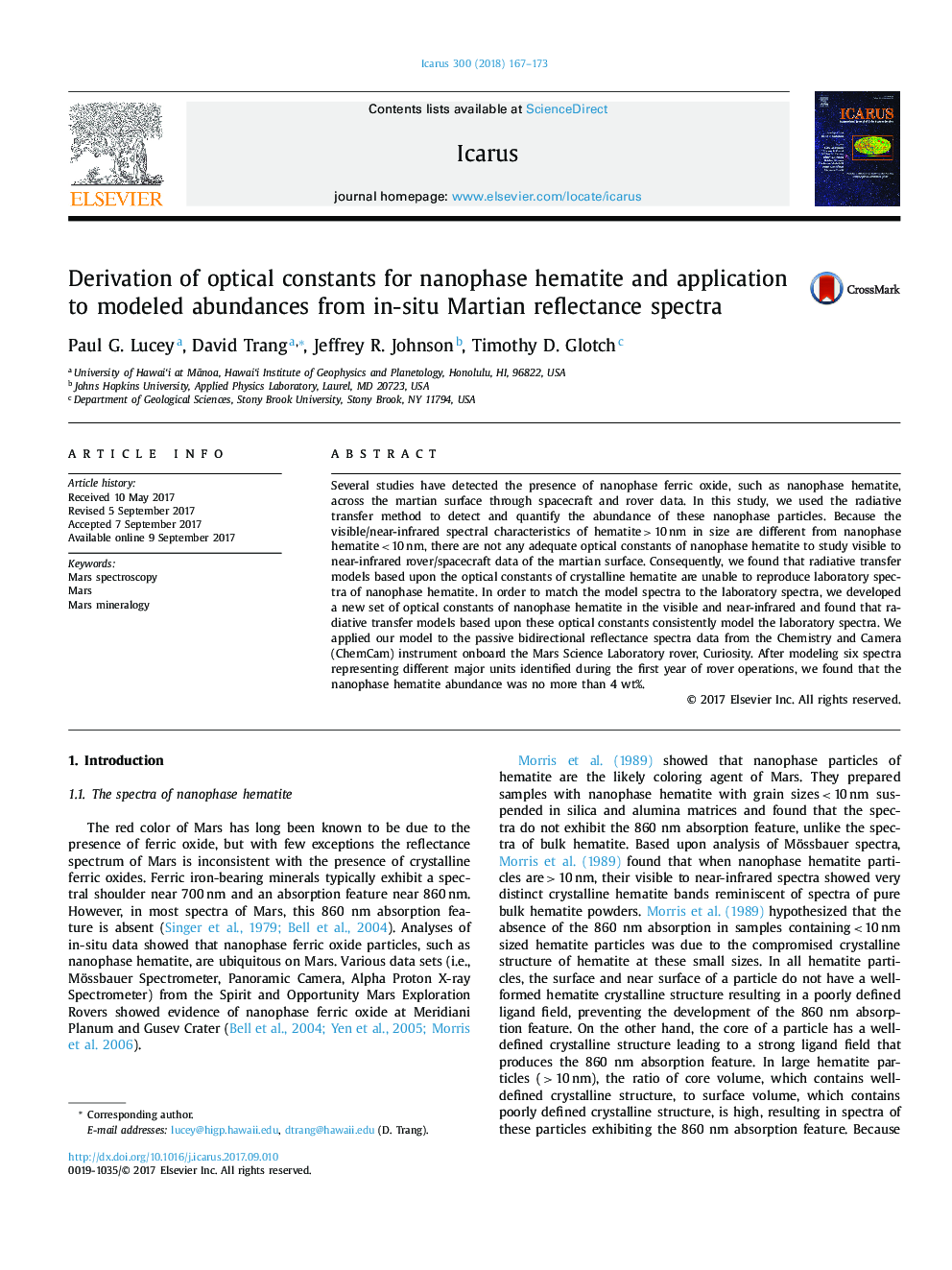| Article ID | Journal | Published Year | Pages | File Type |
|---|---|---|---|---|
| 5486944 | Icarus | 2018 | 7 Pages |
Abstract
Several studies have detected the presence of nanophase ferric oxide, such as nanophase hematite, across the martian surface through spacecraft and rover data. In this study, we used the radiative transfer method to detect and quantify the abundance of these nanophase particles. Because the visible/near-infrared spectral characteristics of hematiteâ¯>â¯10â¯nm in size are different from nanophase hematiteâ¯<â¯10â¯nm, there are not any adequate optical constants of nanophase hematite to study visible to near-infrared rover/spacecraft data of the martian surface. Consequently, we found that radiative transfer models based upon the optical constants of crystalline hematite are unable to reproduce laboratory spectra of nanophase hematite. In order to match the model spectra to the laboratory spectra, we developed a new set of optical constants of nanophase hematite in the visible and near-infrared and found that radiative transfer models based upon these optical constants consistently model the laboratory spectra. We applied our model to the passive bidirectional reflectance spectra data from the Chemistry and Camera (ChemCam) instrument onboard the Mars Science Laboratory rover, Curiosity. After modeling six spectra representing different major units identified during the first year of rover operations, we found that the nanophase hematite abundance was no more than 4 wt%.
Keywords
Related Topics
Physical Sciences and Engineering
Earth and Planetary Sciences
Space and Planetary Science
Authors
Paul G. Lucey, David Trang, Jeffrey R. Johnson, Timothy D. Glotch,
